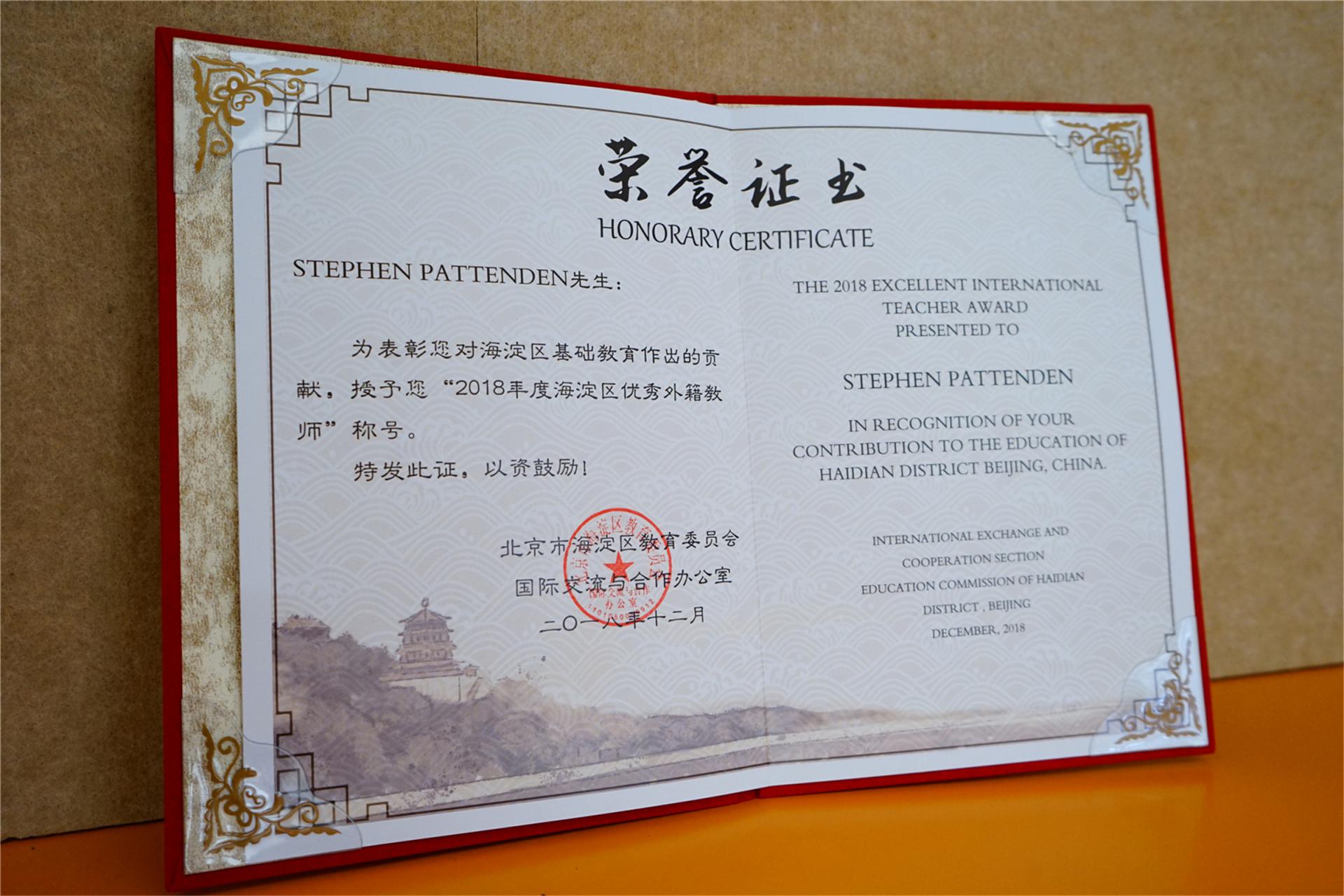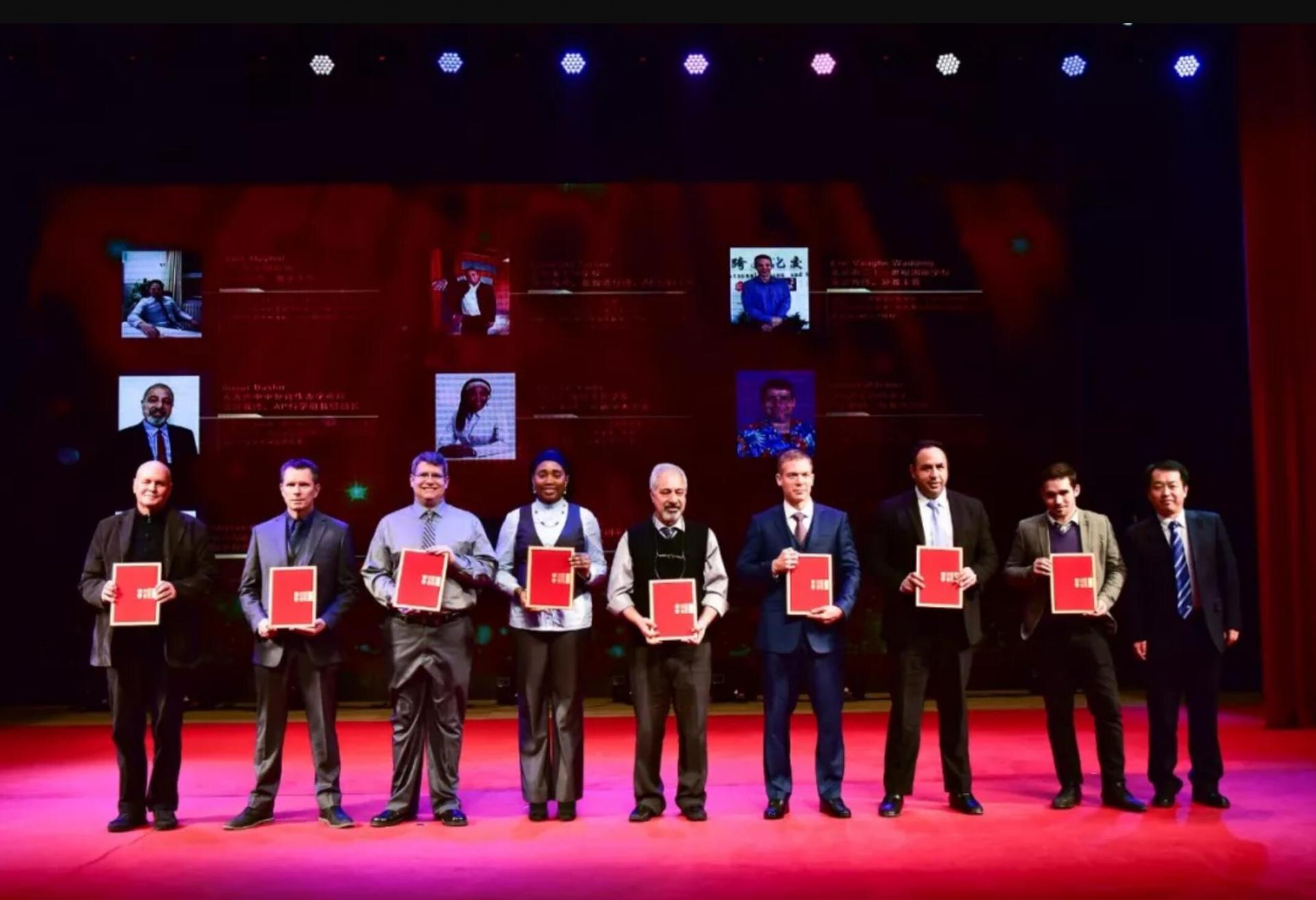The last weekend brought much good news about the KWA secondary school math teaching group. For one thing, the KWA team did a brilliant job at the 2019 NSL China Full-Speed Smart Car Race; for another, Mr. Stephen Pattenden, lead teacher of the secondary school math teaching group, was awarded the certificate of the “2018 Excellent International Teacher Award” by Haidian District.

Honors are one of the recognitions of math teaching and the fruit of teachers’ research, exploration and practice of math teaching over the years. Mr. Pattenden has kindly agreed to our request to share his thoughts about math teaching in writing.
Making Mathematics Fun in KWA
Stephen Pattenden
When asked to write an article to describe what constitutes great math teaching, an avalanche of ideas and information came to mind. Of course, a comprehensive and challenging curriculum is needed, with excellent resources and effective teachers. Providing timely and focused feedback of student progress would rank highly too.
Coincidently, our Head of Curriculum recently asked Kaiwen Academy teachers to choose 3 adjectives to describe a good class. My instinctive response was – engaging, interactive and goal-oriented. Words, chosen by other teachers from across the school, suggested a comprehensive and definitive set of quality lessons taking place.
So, what is the over-arching goal I try to achieve with my students?
The question reminded me of a conversation I had at last year’s Berkeley mini Math Competition (BmMT) with Po-Shen Loh, Professor of Mathematics at Carnegie Mellon University and national coach to the US International Math Olympiad team (gold-medal winners, 2015, 2016 & 2018). We had been discussing the recent success of his team, when Jianbo Chen, Head of Primary Math, here at Kaiwen, asked him how he goes about finding talented team members. Dr Loh’s solution focused less on seeking out strong mathematicians, but rather on how to make mathematics more fun in schools. His point being, that students work harder on subjects they enjoy and often choose their university major based on this and their success in the subject. That way you get more talent to choose from.
Further conversations with university professors during in-school college-counselling sessions have helped reinforce my overall goal – which is to inspire my students. Through my passion for the subject, I aim to show my students the beauty of mathematics and its effectiveness as a tool to understand the world around them. To let them see that it’s a fun and creative endeavor; not just about learning facts and studying in books, but one where we can apply and explore our ideas and discuss solutions.
For example, in my G7 class this year, students will study beyond the textbook in a variety of different ways. They will solve puzzles that practice core thinking skills in a fun way. They will enter competitions and find success in problem-solving at a high level. They will work on projects with cross-curricular connections, showing how mathematical thinking helps them to understand the world and make better choices and decisions.
Two upcoming Grade 7 projects help illustrate connections to the real world. The first asks students to consider the question, “What if everyone had a car?” This encourages societal questions such as why we want or need cars and who gets to choose who has one. It considers technological challenges to pollution and traffic jams. It prompts students to quantify the resources and economics required and predict how transportation might work in the future.
Another investigation has students look at the Olympic medal table and asks, “Which is the sportiest nation?” This challenges students to question why some nations appear to perform better that others. It encourages them to use the concepts of rate and proportion to consider population size, wealth, equality and available resources. Students are challenged to re-frame the problem, reflecting on their research, to present alternate solutions to the question.
Such tasks aim to develop interest, providing students with the skills, strategies and desire to continue studying mathematics – both in school and beyond.


